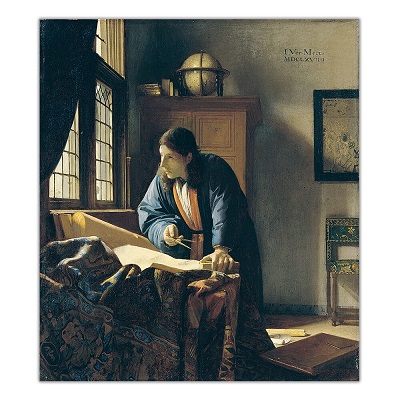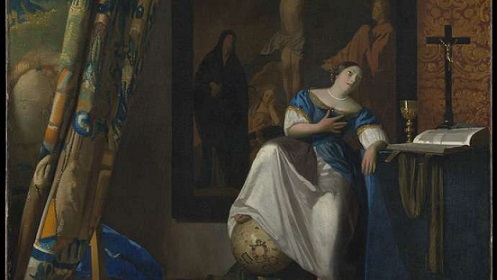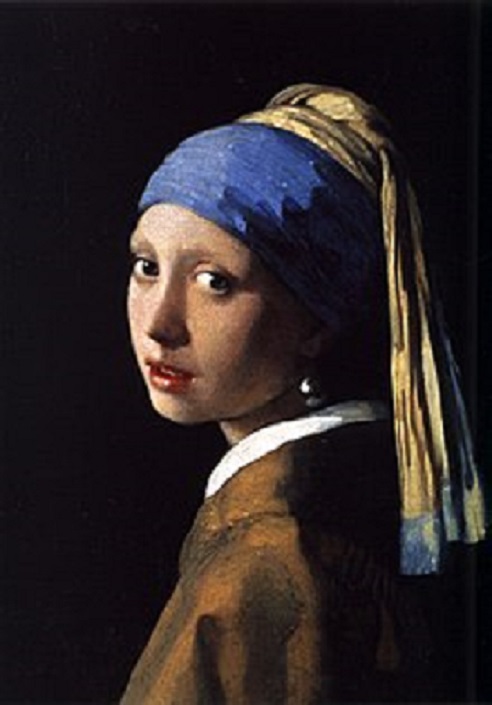
Johannes Vermeer or Jan Vermeer, was a Dutch artist, born on October 31, 1632, in the Dutch city of Delft, and died on December 16, 1675, in the same city.
Vermeer was the creator of the most attractive paintings in the history of art, and although only about 36 of his paintings survive, they are considered rare works, and are considered one of the greatest treasures in the best museums in the world.

Vermeer is the only artist of the seventeenth century to use the expensive lapis lazuli (the natural pigment of lapis lazuli) generously or early in his career. He not only used the natural elements that possess this color, but added to them the earth colors of yellowish brown and orange as a warm light in the brightly lit interior in the painting, and to reflect their multiple colors on the wall, and through this method he created a world more perfect than any that he had witnessed . His way of working was probably inspired by his understanding of da Vinci's observations, according to which the surface of each object contributes to the color of the object next to it, which means that nothing appears completely in its natural color.
The natural pigment of lapis lazuli is further embodied in the painting “The Girl with the Glass of Wine”, as the shades of the red satin dress are based on the natural pigment of lapis lazuli, and thanks to the blue base coat, the mixture of lacquer pigment and vermilion powder applied to it acquires a pure and cold purple color that makes it even more powerful.

Johannes art style
In the seventeenth century, Johannes Vermeer was particularly known for his paintings that depicted everyday life. His 36 paintings showed a remarkable purity of light and form. Vermeer was not well known outside Delft and Amsterdam until the nineteenth century, when the French critic Etienne Joseph Théophile Thore, to Re-evaluate his work.
His most prominent works
The painting The Girl with the Pearl Earring (1665) is considered one of his most famous works, but he is also famous for his artistic paintings that express daily life, and often the most prominent subjects of his paintings are women in scenes of their preoccupation with housework, as in the painting The Milkmaid (1660), or who They share in private moments, as in the painting A Woman Reading a Letter (1663).

